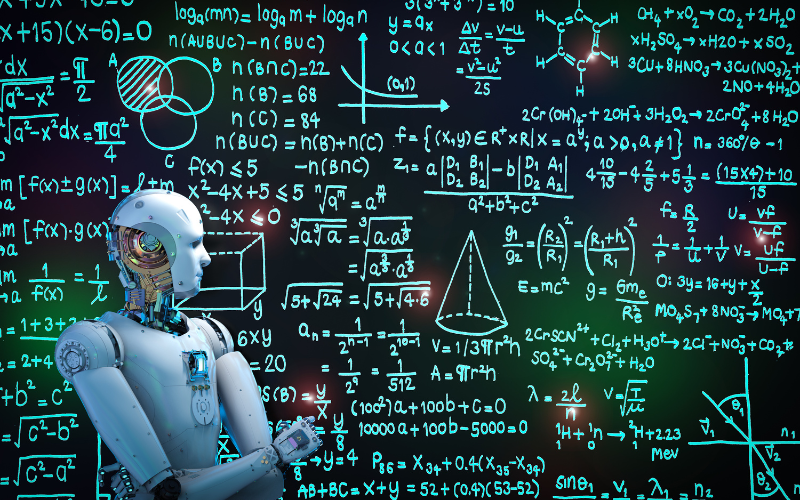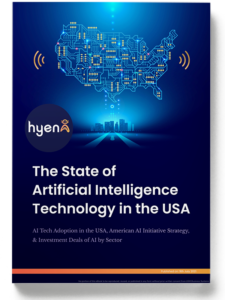Rust and Its Role in Machine Learning and Data Science
Rust and Its Role in Machine Learning and Data Science
In recent years, the Rust programming language has become core for systems programming and beyond. With its speed, safety aspects, and concurrency support, Rust is finding greater acceptance as a challenger in software development previously dominated by Python, Machine Learning (ML) and Data Science. Though Python is queen in software development due to its ease of use and its massive ecosystem, Rust is now gaining recognition as a Python alternative. This article explores what Rust is, why it matters, and where it sits in the role of machine learning and data science.
What is Rust?
Rust is a statically typed, compiled programming language developed by Mozilla Research and made available in 2010. Safety, performance, and concurrency are the base and are obtained without a garbage collector. Rust’s ownership model, where memory safety at compile time is guaranteed and whole classes of bugs such as null pointer dereferencing and data races are eliminated, is Rust’s best-accepted feature.
Rust unifies the control and performance of C++ with the abstractions of modern languages such as pattern matching, algebraic data types, and functional programming models. Such a unification makes it perfect for where performance and reliability are the top priority such as operating systems, game engines, embedded systems, and increasingly, more data-heavy mobile apps.
Why Rust Is Revolutionizing the Game of Data Science and ML?
Rust, never meant for data science, is revolutionizing the game of the field because of a series of reasons:
- Performance
Performance is essential in machine learning, especially for applications such as training large models, data preparation, and data processing in real-time streams. Rust performs as fast as C and C++ and typically faster than even more low-level languages like Python by orders of magnitude. While Python is completely wrapped in bindings to C/C++ libraries like NumPy, TensorFlow, or PyTorch, Rust allows developers to write natively at high-performance levels.
- Concurrency and Memory Safety
The memory safety guarantee of Rust without garbage collection is particularly suited to work with concurrent and parallel computing. This is a big advantage in the case of working with large amounts of data or building scalable data processing pipelines.
- Interoperability
Rust also integrates with other programming languages, most notably C and Python. PyO3 and rust-python libraries make it possible for Rust libraries to be invoked directly from Python in a manner that enables data scientists to offload performance-critical sections of their codebase to Rust while still being able to use the convenience of Python.
- Maturing Ecosystem
Even in their infancy relative to Python’s multiverse, Rust’s machine learning and data science libraries are coalescing day by day. Libraries like Nd array (n-dimensional array), tch-rs (PyTorch bindings), rust learn (machine learning primitives), and Linfa (parallel machine learning library analogous to scikit-learn) are bringing machine learning pipelines to life in Rust.
Rust in Machine Learning
There are three categories of Rust usage in machine learning: core computation, model training/inference, and tooling and deployment.
- Core Computation and Data Processing
The performance and security properties of Rust make it a great candidate for data wrangling and computational kernels. Among the libraries that fall in this category are
• Nd array: Provides multi-dimensional arrays and array operations comparable to NumPy.
• Polars: A Rust library for performance Data Frames with lazy evaluation and serving as a backend today in Python-based projects.
• Rayon: Facilitates data parallelism with minimal code alteration so that concurrent data processing is straightforward.
Rust is thereby poised for application in the model training and inference stages of ML pipelines stages where memory safety and speed cannot be compromised.
- Model Training and Inference
Where PyTorch and TensorFlow are the crown jewels of Python, Rust is hard on their heels:
- tch-rs: Exposes the PyTorch C++ API (LibTorch) bindings so developers can train and deploy deep learning models in Rust.
- Burn: A brand-new, entirely Rust-implemented deep learning library with goals to be modular and fast.
- Linfa: Scikit-learn inspired, Linfa offers garden-variety machine learning algorithms such as k-means, logistic regression, and SVMs.
These bring Rust nearly a true ML platform. Not yet as heavily featured as Python’s, but potentially for specialist use.
- Tooling and Model Deployment
Rust is particularly well-suited for building high-reliability, high-speed CLI tools and microservices, which is the perfect pair for serving trained models. For instance, a Python-trained model can be serialized (e.g., ONNX), and an inference can be served by a Rust server with low latency and high reliability.
Tract an ONNX inference runtime written in Rust/Python is an example of activities that enable model deployment with Python environment cost removed, highly valuable in situations such as resource-constrained environments.
Rust in Data Science
Data science encompasses data ingestion, data analysis, data visualization, and experimentation. As integrated into pandas, Jupiter, and Matplotlib as they are, Rust has, however, found niches:
- Data Processing
Libraries like Polars and Data Fusion are bringing Rust to data processing. Polars, for instance, is growing at a higher rate than pandas that even become available from Python via bindings.
- Data Engineering and ETL
Rust is also being used more as a fresh alternative to create high-performance data transformation applications and ETL pipelines due to
- Extremely high run-time performance
- Strong error handling
- Easy deployment (static binaries, no run-time dependencies)
Columnar data formats are a piece of cake to process by virtue of the arrow-rs (Apache Arrow in Rust), and Tokio offers an easy way to create high-throughput async data services.
- Visualization
Rust’s graphing feature is limited but growing. There are libraries like plotters that are limited with plotting and GUI functionality but do not have Matplotlib. Data scientists in most cases use Rust for the computation back end and Python or JavaScript for visualization.
Challenges and Limitations
It also has its attendant challenges to mass use of data science and ML, despite all that Rust can provide:
- Smaller Ecosystem
Python’s nicely baked ecosystem and community-crafted libraries, tutorials, and tools guarantee plenty. On the other hand, in its early days, Rust is not yet there as far as supporting the majority of packages of Python, such as scikit-learn, pandas, or TensorFlow.
- Learning Curve
Rust’s complexity ownership and lifetimes above all else will certainly daunt newcomers, particularly those who are not systems programmers.
- Lower-Level Abstraction
Usability is secondary to expressiveness and control in Rust. That is not what data scientists thrive on who live for quick prototyping and high-level APIs.
- Tool maturity
Although it has developed phenomenally quickly, such infrastructure as Rust visualization libraries, notebooks, and IDE support lag behind Python user experience maturity.
The Future of Rust in ML and Data Science
Rust won’t replace Python yet in the near term, at least for prototyping and research. But as a great complement to Python with its performance, security, and scalability benefits, it’s wonderful. We can expect to see more and more:
- Rust manages back-end logic, and Python manages the user interface.
- Rust libraries with Python bindings, becoming faster without losing usability.
- Rust as an ML systems production language, edge deployment, and data engineering workloads.
Rust as the default production ML systems, edge deployment, and data engineering workloads language.
Open-source software, commercial uptake (e.g., by Dropbox, Amazon, and Microsoft), and projects such as the Rust Foundation are pushing the technology fast. With its ongoing development and calling upon community contribution, Rust might very well be a player in the next generation of data science and machine learning technologies.
Conclusion
Rust is uniting speed, safety, and contemporary programming idioms in ways heretofore unknown to the game and thus is a fascinating and more desirable language for data science and machine learning. Python will remain the reigning champion of research and experimentation, but Rust has compelling arguments for high-performance computing, large systems, and concurrent-safe development. With its increasingly vast ecosystem and increasing adoption, Rust is well on its way to becoming an essential tool in the machine learning engineer’s and data scientist’s toolkit — not a substitute for Python, but a dignified adjunct.




















